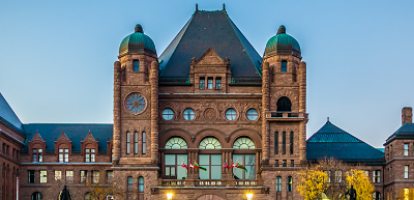From: Guy Saint-Jacques
To: Canadians Concerned About China
Date: September 8, 2020
Re: Is Trade with China Still Worth it?
The ongoing crisis with China is likely to continue for some time as the extradition process for Huawei CFO’s Meng Wanzhou could drag on for years.
Apart from having two Canadians detained as hostages and four on death row for drug trafficking, Canada paid a heavy price in 2019 as our exports to China fell by 16 percent – $4.5 billion – with canola and pork producers being hard hit, although swine flu eventually forced China to resume its imports of our pork.
Following the conclusion of the Phase I trade deal between China and the US, and the impact of the COVID-19 pandemic, one would have expected that our exports to China would continue to fall in 2020. Indeed, in the first three months, they were down 16 percent. But, after six months, Statistics Canada reported a drop of less than 1 percent when compared with the same period in 2019, this at a time when our overall exports were down 16.67 percent. At the same time, Chinese exports to Canada were down by 10 percent.
Canola is worth further examination: while seed trade is still flowing at roughly 30 percent of normal volume according to the Canola Council of Canada, our exporters have found new ways to sell into the Chinese market via intermediaries, such as the UAE, where producers process the seeds and sell the oil on to China. Canola oil and meal exports also remain unaffected under the current restrictions and have increased in 2020. Despite this relatively good news, Canadian farmers may be moving away from canola as demonstrated by a slight reduction in acreage. (Meanwhile new barley tariffs on Australia, imposed after the prime minister called for a full investigation of the origins of the pandemic, have benefitted Canadian farmers.)
These data confirm that China remains an important market for our exporters especially for primary products.
With the country likely to continue to grow at 4 to 6 percent annually for many years, quality Canadian products will continue to be welcomed by Chinese consumers and manufacturers as long as they are price competitive.
In the same way, a US-China Business Council survey released in early August found that 70 percent of its US members were optimistic about the business outlook in China over the next five years. While 86 percent of the Council’s 200-odd members acknowledged bilateral trade tensions had affected their business in China, 83 percent said that it remained either their top or top five priority market for strategic growth. Additionally, if the US and China succeed in negotiating a Phase II to their trade deal, it could hurt Canadian exporters as China will want to find US sources for products that we traditionally supply.
This creates a challenge for the federal government. Of course, the last 20 months have demonstrated the dangers of over-dependence on a country like China that does not hesitate to take retaliatory measures for any perceived slight. In this regard, a July 21 Ipsos poll for Global News showed that 82 percent of Canadians favoured a reduction in reliance on trade with China. Also, 38 percent of respondents agreed that Canada should “completely sever economic ties with China” and just 14 percent held a favourable view of China, down from 38 percent in 2018.
In the current climate, and as long as China chooses to act as a bully, the Canadian government should look at ways to diversify its trade by relocating resources from China to other markets in Asia – this would also help take better advantage of free trade agreements recently concluded in the region. In this regard, ASEAN should be a top priority for a new FTA because of the growth potential of the region. As Daniel Schwanen and Dan Ciuriak outlined in an Intelligence Memo last month, negotiations could proceed rapidly using the FTA concluded with Australia and New Zealand as a model. Similarly, the CPTPP offers a good platform to expand our exports. It would not be surprising to see a Biden administration take another look at it. The government should also continue to develop common approaches with allies to force China to respect international agreements and to deliver on the commitments it made when it joined the WTO in 2001. This would bring more certainty and predictability to doing business with 20 percent of the world’s population.
Guy Saint-Jacques is a senior fellow at the C.D. Howe Institute and former ambassador to China.
To send a comment or leave feedback, email us at blog@cdhowe.org.
The views expressed here are those of the author. The C.D. Howe Institute does not take corporate positions on policy matters.





